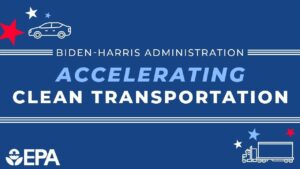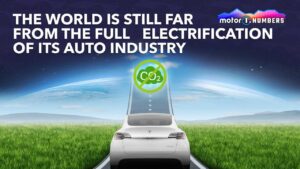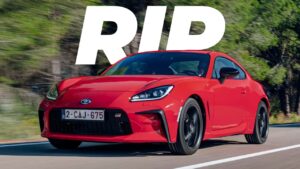Biden’s EPA Rule Sets Stricter Auto Limits: Key Component of Green Agenda
Earlier today, the Biden Administration revealed the implementation of highly anticipated revised regulations on emissions – and they’re stringent, though not as severe as the original proposal by the EPA.
Under the revised regulations, passenger cars and trucks will be mandated to reduce their greenhouse gas (GHG) emissions by approximately 50 percent by the year 2032. There will also be significant reductions in fine particulates, which contribute to smog. These measures are not as strict as the Environmental Protection Agency’s (EPA) original proposal from last year, which called for more immediate changes from automotive manufacturers in 2027 and a larger decrease of up to 67 percent in CO2 emissions by 2032.
In spite of the minor loosening in the ultimate regulation, there is no doubt that it will have a significant impact on the types of vehicles being sold by dealerships in the coming decades. The Environmental Protection Agency (EPA) had originally proposed that two-thirds of all new car sales by 2032 should be electric, a target that was met with criticism from both automakers and unions who deemed it unattainable. The leading industry group for automakers even went as far as to label the initial plans as “unreasonable and unachievable,” and urged the Biden Administration to substantially ease the requirements. The final proposal, which was unveiled today, largely addresses their concerns and aligns more closely with President Biden’s original objective of having 50 percent of all vehicle sales consist of plug-in and electric models by 2030.
Formally, the latest regulations are neutral towards implementation, allowing car manufacturers to continue offering any type of drivetrains as long as they adhere to the emission standards. It is highly likely that achieving the new emission goals will entail surpassing the current proportion of electric and hybrid vehicle sales, currently at 7.6 percent of overall new car sales. According to estimates by the EPA, the range of EV new car sales could reach anywhere between 30 to 56 percent by 2032 under the finalized rule, depending on automakers’ chosen method of implementation.
The recently released regulations have garnered approval from car manufacturers, but have left Biden’s adversaries disgruntled. Ex-president and current presidential nominee Donald Trump has consistently and severely denounced Biden’s stance on environmentalism and electric vehicles. Petroleum corporations have also voiced their discontent with the Environmental Protection Agency’s propositions, labeling them as an implicit prohibition on gasoline-powered cars. In addition, the state of Texas is currently embroiled in legal proceedings against the EPA, arguing against its jurisdiction to oversee automobile emissions.
The president is also confronted with obstacles from the progressive side, as around a hundred US legislators issued a plea for Biden to implement stricter regulations rather than weakening them in favor of the automotive sector.
The regulations were previously strengthened in the past (during the tenure of President Obama) and later reversed (under the administration of President Trump), before being reinstated (under President Biden’s leadership). Therefore, the result of the 2024 presidential election is likely to determine the longevity of this rule, if it even gets the chance to be put into action.
Source: EPA






